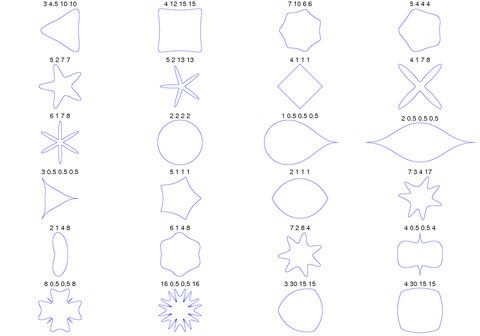 | ||
Processing tutorial creating trippy animations with the superformula
The superformula is a generalization of the superellipse and was proposed by Johan Gielis around 2000. Gielis suggested that the formula can be used to describe many complex shapes and curves that are found in nature. Gielis holds a patent related to the synthesis of patterns generated by the superformula.
Contents
- Processing tutorial creating trippy animations with the superformula
- Extension to higher dimensions
- Generalization
- References
In polar coordinates, with
By choosing different values for the parameters
The formula was obtained by generalizing the superellipse, named and popularized by Piet Hein, a Danish mathematician.
Extension to higher dimensions
It is possible to extend the formula to 3, 4, or n dimensions, by means of the spherical product of superformulas. For example, the 3D parametric surface is obtained by multiplying two superformulas r1 and r2. The coordinates are defined by the relations:
where
Generalization
The superformula can be generalized by replacing the parameter
This allows the creation of rotationally asymmetric and nested structures. In the following examples a, b,
A GNU Octave program for generating these figures:
3D superformula: a = b = 1;
A GNU Octave program for generating these figures:
